
NA/Photos.com/Getty Images
Bitterness is a double-edged sword. On one hand, it contrasts other flavors, especially sweetness, in a positive way. On the other hand, it's bitter. An aversion to bitterness is inherent -- it's nature's way of indicating something might be poisonous -- but most people overcome it. Those who haven't can reduce the bitterness in foods, even the notoriously astringent bitter greens, by splitting up the bitter compounds they contain. Escarole, one of the delicate bitter greens, really shines when you tame its bitter bite and might inspire you with new ways to prepare it.
Prep
Submerge the head of escarole in a large bowl of cold water several times while gently working your fingers between the leaves. Let the escarole soak for a few minutes so any dirt and debris can settle at the bottom of the bowl. Place the head of escarole on a towel to dry.
Cut about 1/2 to 1 inch from the base of the head and discard the outer leaves. Remove the next layer of leaves, and the one after those if they're dense, and reserve them for another use. The densest leaves have the most bitterness.
Pull the leaves apart and place them in a bowl. Massage the leaves while tossing them, squeezing them hard enough to break down the cell walls without breaking the leaves. Squeezing and popping the cells releases an enzyme that breaks apart bitter compounds.
Blanch the escarole in boiling, salted water for 30 seconds. Remove the leaves with a slotted spoon and place them in a bowl of ice water. Remove the leaves from the ice water and place them on a towel to dry.
Chop the leaves crosswise to the desired thickness if you want to saute or stew them. Leave the escarole leaves intact if you want to use them in a salad or braise them.
Cook
Let the escarole come to room temperature and season it liberally with salt 15 minutes before cooking it. Sodium leaches some of the moisture out of the leaves, taking the bitter compound with it. Wipe the salt and moisture off the leaves before using them.
Cook escarole with fat. Butter, a flavored oil such as olive, or an animal fat such as rendered bacon or duck fat, softens escarole's bite and helps it mingle harmoniously with other flavors in a dish.
Braise escarole alone or add it to another braised dish. Braising too long softens escarole too much. However, adding it to a braised dish or a stew in the last 15 to 20 minutes -- after the meat is fully cooked -- removes much of its bitterness, adds the flavor of the braising liquid or stew and makes the leaves tender but toothsome.
Add a touch of lemon juice or vinegar to the dish. Acids, such as vinegar or vinegary sauces, counter the bitterness in escarole. Lemon juice counters the bitterness while brightening a dish's flavors. You can also use lime juice or tomatoes.
Cook the escarole with spicy ingredients. You find several recipes, particularly those originating from the South, calling for a few red pepper seeds or presenting them as an option. In addition to the heat providing a pleasant distraction from the bitterness, the capsicum in chili peppers, crushed pepper flakes and other spicy ingredients splits up the bitter compounds in escarole. You don't need much spice to work, just enough to give the escarole a hint of heat in the background.
Cook the escarole with a salty ingredient. Cooking with salty foods, such as anchovies, sardines, soy sauce or capers and olives takes the edge off escarole. However, don't add a salty ingredient if it doesn't go with the other components of the dish.
Sweat the escarole. Sweating releases bitter moisture from the leaves. You can chill the leaves in the refrigerator after sweating them, if desired. To sweat escarole, cook it in a lightly oiled pan over low heat for about 15 minutes. You can place a piece of parchment paper over the escarole to help it sweat.
Related Articles

How to Cook Chard

How to Cook Escarole Without it Being ...

How Can I Make Curry Taste Less Bitter?

How to Make Homemade Spaghetti Sauce

Cooking Kale Greens
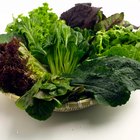
How to Cook Mustard Greens Cajun Style
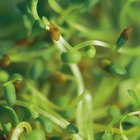
Why Do Sprouts Taste Bitter?

A Substitute for Japanese Parsley

How to Blanch Okra

How to Clean and Cook Broccoli Rabe

How to Make Easy 5 Ingredient Fresh ...

How to Blanch Bitter Greens for Italian ...

How to Wilt Spinach for Cooking

How to Cook Leeks and Kale
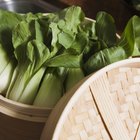
What Goes Well With Bok Choy?
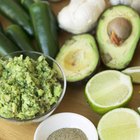
How to Counteract the Bitter Taste of ...
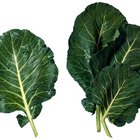
Why Are My Collard Greens Bitter?

How to Cook Honeycomb Beef Tripe

How to Make Fish Stock

How to Season Peas & Carrots
References
Writer Bio
A.J. Andrews' work has appeared in Food and Wine, Fricote and "BBC Good Food." He lives in Europe where he bakes with wild yeast, milks goats for cheese and prepares for the Court of Master Sommeliers level II exam. Andrews received formal training at Le Cordon Bleu.
Photo Credits
NA/Photos.com/Getty Images